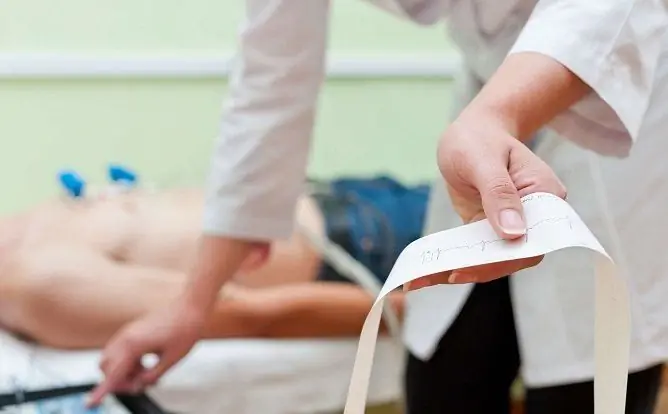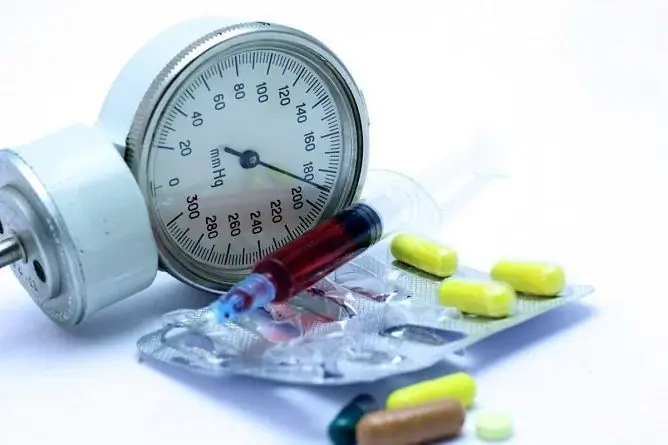- Author Rachel Wainwright [email protected].
- Public 2023-12-15 07:39.
- Last modified 2025-11-02 20:14.
Low grade hyperopia
Hyperopia is a fairly common disease known throughout the world as farsightedness. A quarter of the world's population, regardless of gender, age or other physiological characteristics, suffer from this vision problem.
Farsightedness is the most common disorder of the eyeball. The main symptom is that a person can clearly see at a distance of several meters, but blurry near.
In most cases, mild hyperopia occurs in childhood and adolescence. This leads to dire consequences. Before the final formation of the body, the lens of the eye is in an elastic state and is able to adapt. When the accommodation of the eye weakens, the disease manifests itself in full, impairing vision at close distances.
Important! To prevent the development of pathology in a more severe stage, it is necessary to consult a doctor at the slightest sign and in no case self-medicate. Using drugs that you know the name of from the Internet can make things worse.
Farsightedness is characterized by dysfunction of the lens. The main problem is that the light does not fall on the retina, as it should normally, but lies directly behind it.
Symptoms
Outwardly, hyperopia does not manifest itself at all. It is possible to determine the disease, especially at the initial stage, only with the help of medical equipment.
With the help of medical instruments, the ophthalmologist determines the length of the eye, which in the presence of pathology is 1.5-2.5 cm less. At birth, the development of farsightedness in infants is normal and during normal adulthood the problem goes away by itself.

There are norms within the acceptable range for children:
- 1 year - 2.5 diopters;
- 2 years old - 2 diopters;
- 3 years old - 1.5 diopters.
The main symptom is blurring of an object at a distance of up to 3 meters, while all things at a distance are clearly visible and without loss of quality.
Important! To determine if a child has a disease, pay attention to how he reads and examines objects. If, trying to see something, he begins to squint, then you should consult a doctor for further advice.
As side symptoms can be observed:
- inflammation of the eyes;
- fatigue when reading or using a TV, monitor, phone;
- dizziness;
- headache when reading, watching a movie, etc.;
- blurring the picture when looking at small objects;
- strabismus.
The reasons
The causes depend on many factors, including age. For example, in older people, the elasticity of the lens weakens, which is why hyperopia appears as a normal phenomenon. In children, after birth, the manifestation of this disease is also not considered a pathology, as long as the indicators do not go beyond the normal range.
In addition to the normal physiological development of hyperopia, it can form due to:
- flat cornea;
- shortened eyeball;
- lowering the accommodative capabilities of the lens.
The disease does not appear out of thin air. The causes of such pathologies are:
- Hereditary factors. If the parents are diagnosed with hyperopia, then in more than half of the cases, this disease will be transmitted to the child.
- The presence of pathologies. Some of the most common causes are side diseases: diabetes, cancer, astigmatism and others.
- Congenital form. Bad habits of the mother, poor nutrition and stress can affect the development of hyperopia in a child even at the stage of fetal formation.
In other cases, hyperopia is an age-related phenomenon. At a young age, it is enough to do gymnastics and devote more time to physical development. This will help form a stronger ocular system and get rid of mild hyperopia.
Treatment
Treatment methods are selected based on the age and degree of the disease. For a mild degree, lenses and glasses are often used, which are selected by an ophthalmologist, depending on the deviation from the norm.
Important! Optical means - a temporary way out. Over time, the problem may worsen and the lenses and glasses will no longer help.
Surgical treatments are often prescribed:
- laser correction;
- corneal plastic;
- implantation of actual lenses;
- radial keratotomy.
But surgery is not the only treatment. At the initial stage, exercise complexes and physiotherapy, including phonophoresis and pneumomassage, are very effective.
The main thing to remember is that you should not resort to cardinal methods of treating children in the first three years of life. This can only worsen health. Use gymnastics for the eyes and take your time to switch to surgical treatment.
This disease should not be ignored. Subsequently, the usual loss of visual acuity can develop into strabismus, conjunctivitis, amblyopia, glaucoma and other eye disorders.
Found a mistake in the text? Select it and press Ctrl + Enter.






